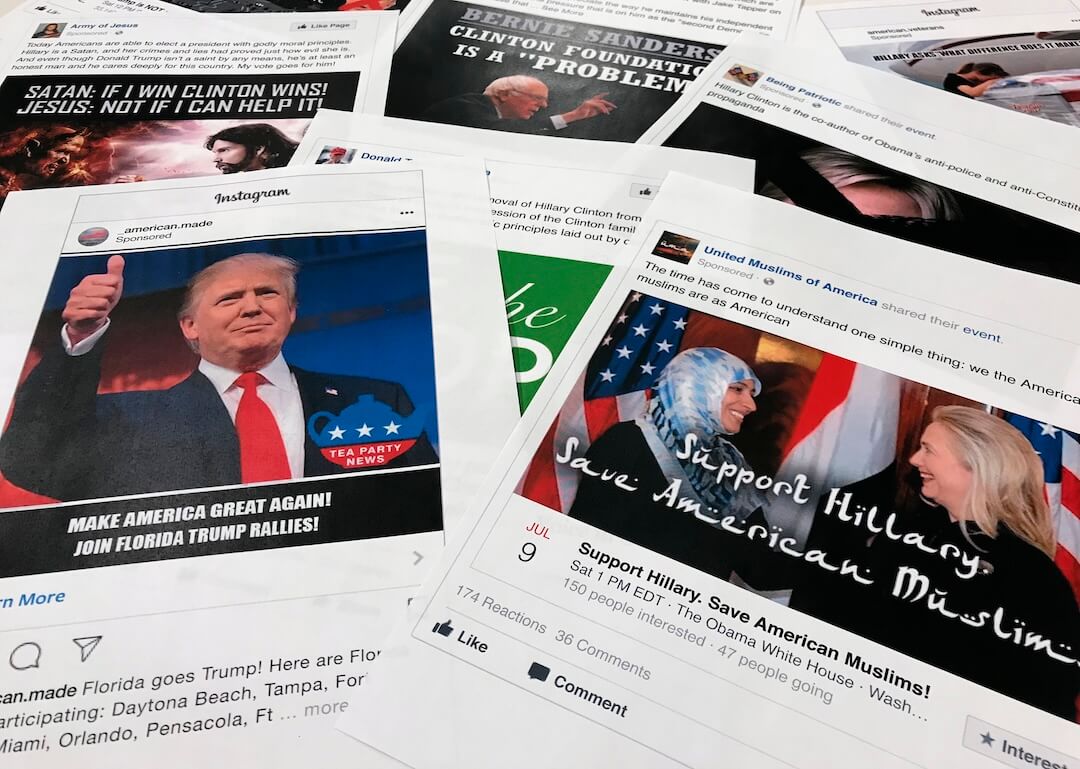We’ve seen it before: Foreign adversaries, seeking to influence U.S. elections, deploy bots and trolls to infiltrate social media platforms.
In 2016 and 2019, the Russian group Internet Research Agency created fake social media accounts to sow discord among U.S. voters in swing states, posting content about divisive topics such as immigration and gun rights.
Similar fake social media campaigns are already in progress: Last week, Meta said it removed 4,789 China-based Facebook accounts that were impersonating Americans. Meta said the accounts posted about U.S. politics and U.S.-China relations and criticized both sides of the U.S. political spectrum.
And with another election approaching, bad actors have a newly powerful tool to wield: generative artificial intelligence.
Generative AI — technology that lets computers identify patterns in datasets and create text, photos and videos — powers the increasingly popular text generator ChatGPT and text-to-image tools such as DALL-E and Midjourney.
Researchers at Rand Corp., a nonprofit public policy research organization, warned that these tools could jump-start the next generation of social media manipulation to influence elections. With these tools, content for influence campaigns — political messages, profile photos for fake accounts, video footage and even audio — is easier and cheaper to create.
We talked to experts who described ways generative AI could help foreign governments and adversaries influence U.S. political discussion and events.
Valerie Wirtschafter, a fellow in the Brookings Institution’s Foreign Policy program and the Artificial Intelligence and Emerging Technology Initiative, said generative AI will likely fuel mistrust.
“With the frenzied roll out of generative AI tools, we now live in a world where seeing may not actually be believing,” she said.
Although Russia’s 2016 election interference targeted key voter demographics and swing states, Rand researchers predict that more sophisticated generative AI could make it possible for adversaries to target the entire U.S. with tailored content in 2024.
What are influence operations?
Information operations are also called influence operations and information warfare. For Rand researchers, these operations involve adversaries collecting useful information and disseminating propaganda to gain a competitive advantage. Foreign governments use these operations to change political sentiment or public discourse.
The FBI, which investigates foreign influence operations, said the most frequent campaigns involve fake identities and fabricated stories on social media to discredit people and institutions.
Traditional media outlets sometimes cover these narratives unwittingly. In 2017, for example, the Los Angeles Times featured tweets from accounts operated by the Russian Internet Research Agency in an article about reaction to Starbucks Corp. pledging to hire refugees. One of these accounts misrepresented itself as the “unofficial Twitter of Tennessee Republicans.”
One way to measure influence operations’ impact is examining how they seep from legacy and social media into real life. Ben Nimmo, former head of investigations at social media analytics company Graphika and now global threat intelligence lead at Meta, wrote that the most dangerous influence operations can spread to many different groups, across social media and other communications, including radio, TV, direct messages and emails.
What was previously possible
AI has been able to create fake faces since 2014, and experts said AI tools started being regularly used in 2019 to create deepfakes, or machine-generated image or video that makes people appear to do or say things they didn’t.
Experts said that year had the first publicly identified case of a fake face used in a social media campaign. In 2019, a network of Facebook accounts using AI-generated profile photos posted about political issues including former President Donald Trump’s impeachment, conservative ideology and religion.
Kenton Thibaut, resident China fellow at the Atlantic Council’s Digital Forensic Research Lab, said China used generative AI on a smaller scale in 2019 and 2020 to generate profile photos for bot pages or “sock puppet accounts” — which are operated by people but misrepresent who’s behind them.
Images on these accounts were easy to detect as fake, Thibaut said, because they featured telltale signs such as distorted ears or hands, which was a common problem with that generation of software.
Reliance on human labor also made AI-generated content in previous large-scale influence campaigns easier to detect as artificial, Rand researchers said. Messages tended to be repetitive, and this repetition led to the identification and removal of these networks. Newer AI tools make it easier to create more content, so it isn’t necessary to rely on one set of messages crafted by humans.
Cheaper and less labor-intensive influence operations
Disinformation campaigns from the 2010s needed humans at every stage — from developing a concept to designing material and spreading it across social media.
Generative AI automates these processes, making them cheaper and requiring fewer people.
“The types of people who conduct such campaigns will be similar to those who led these operations in the past, but the cost of producing content will be significantly lower,” said Wirtschafter. “What would maybe take a team of 40 people to produce might now just take a few.”
AI also can be used to more efficiently translate information, Thibaut said. This can aid people outside the U.S. who are conducting influence campaigns within the U.S.
New technology helps fine-tune more personalized messages
With the launch of tools such as ChatGPT in 2022, Thibaut said China has been pursuing more precise communication techniques. That means forgoing generic pro-China, anti-U.S. narratives and tailoring narratives based on audiences’ local interests and needs. This way, the messages resonate.
Thibaut pointed to Wolf News, a media company Graphika described as “likely fictitious.” Graphika discovered that Wolf News was featured in a pro-Chinese political spam operation that was using AI-generated news anchors. In one video, a news anchor discussed the frequency of mass shootings in the U.S.; in another, an anchor promoted China’s talks with other nations.
Pro-China bots’ distribution of these videos was the first reported instance of using deepfake video technology to create fictitious people for a state-aligned influence operation, according to Graphika and The New York Times.
Rand Senior Engineer Christopher Mouton wrote that U.S. adversaries could manipulate AI models to sound “truthy,” crafting humanlike, coherent, well-structured and persuasive messages.
Sophisticated generative AI and elections
Wirtschafter said adversaries could use AI in last-minute attempts to disenfranchise voters. In the past, alarming false claims that spread on social media misled people about what would happen when they go to in-person polling places, or if they vote by mail.
Wirtschafter said deepfakes, generated images and voice cloning could be used to imitate candidates running for office and could target political candidates, voters and poll workers. These fakes would be harder to detect in state and local races compared with higher-profile national races, she added.
Wirtschafter also said AI could be used to manufacture a last-minute news event. She mentioned a case two days before a Slovakia election in which a fake audio recording was released and fact-checkers scrambled to debunk the claims. The fake audio discussed how to rig the election and mimicked the voices of the liberal Progressive Slovakia party’s leader and a journalist.
“This type of last-minute effort could be a looming threat in the 40 different elections (in 2024) taking place around the world, where some media have less capacity to fact check and disseminate clarifying information rapidly,” she said.
However, Munira Mustaffa, founder and executive director of Chasseur Group, a consulting company specializing in security challenges, said although it is almost certain AI will be used to influence voter opinions, it may have less effect than confirmation bias — people favoring information that aligns with their beliefs.
“Strategies to combat election-related disinformation should focus more on addressing this underlying cognitive bias, fostering critical thinking and information literacy among the electorate, rather than solely depending on tech solutions to counter falsehoods,” she said.
This fact check was originally published by PolitiFact, which is part of the Poynter Institute. See the sources for this fact check here.







